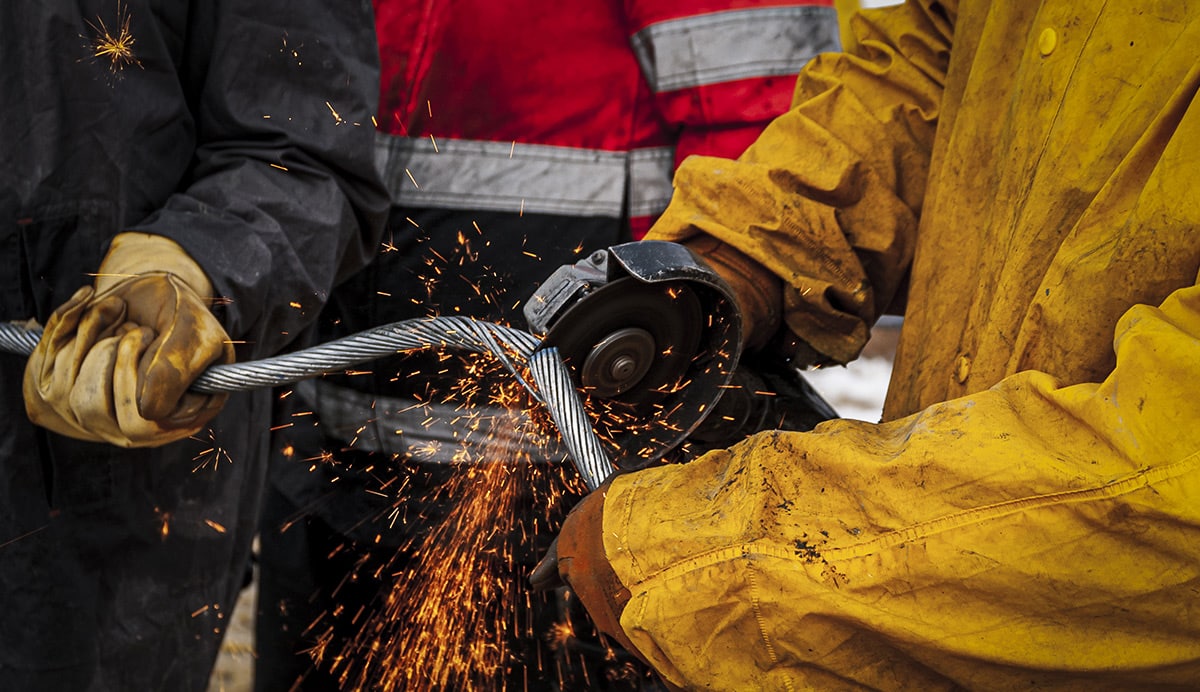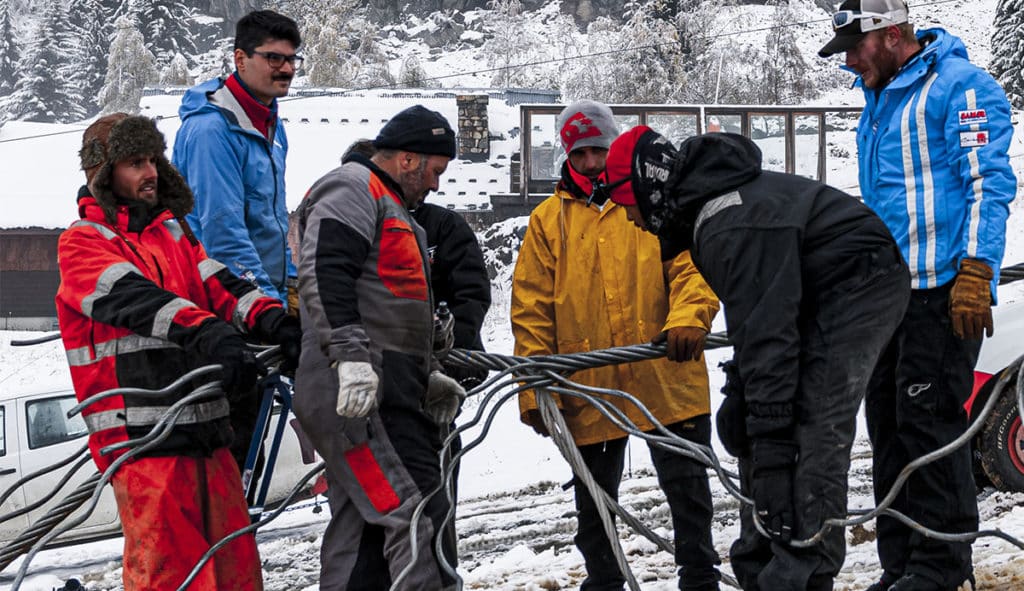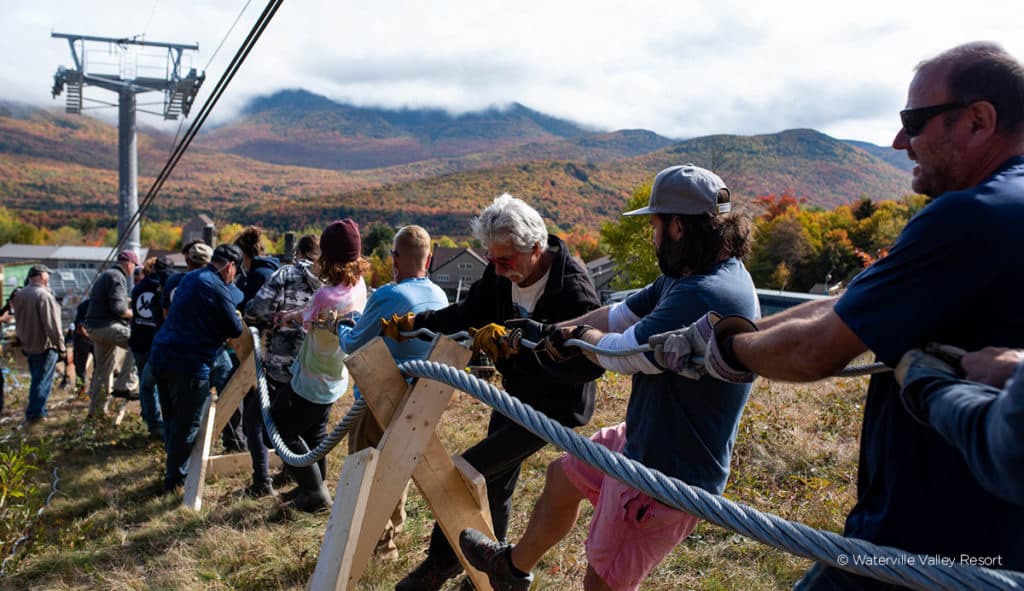
SPLICING: A KEY STEP FOR CABLE TRANSPORT INFRASTRUCTURES
MND TEAMS WORKING IN WATERVILLE VALLEY RESORT IN THE UNITED STATES AND SAINT-LARY IN THE PYRENEES IN FRANCE RECENTLY SPLICED CABLE ON TWO MND ROPEWAYS SOLUTIONS: A 6-PASSENGER DETACHABLE CHAIRLIFT AND A 10-PASSENGER GONDOLA.
DEFINITION AND TECHNIQUES OF AN ESSENTIAL OPERATION!
Often unknown to the general public, splicing requires a great deal of technical skill and expertise, and is carried out as part of the construction of a new ropeway infrastructure, whether in an urban or mountain environment.
TRANSPORT CABLE
In the mountains, as in the city, the haul rope / cable on which the cabins or seats can be carried, depending on the type of solution involved: chairlifts, cable cars, gondolas, etc., will generally weigh several dozen tons, depending on its length and the type of equipment. In order to be installed over distances that can sometimes be several kilometers long, a ski lift cable is unwound through stations and towers and then assembled at both ends by what is called “splicing”.
This cable is made up of many small metal cables arranged around a plastic core (the cable’s core) that serves as a support. This multitude of small cables is helically wound into what are called strands. These strands are then wound in a spiral around the cable core.
ROPE SPLICING
In general, the term “splicing” refers to the joining of two ropes or cables by connecting their ends. In ropeway and ski lift transportation, “splicing” is therefore the process of joining the rope. We can also speak of “marrying” the cable. Splicing is a delicate operation that must be carried out manually, and it ensures that the cable forms an endless loop. This is why we can also talk about making a loop of cable.

Sometimes considered an art in the world of cable transportation, the operation requires a unique know-how coming from the “splicers” or specialized technicians and cannot be performed by automatic machines.
The strands at both ends of the rope are untangled to arrive at the desired splice length. It is important to note that this is a standardized process. Its length must be equal to or greater than 1200 times the nominal diameter of the rope. For example, for a 45mm diameter cable, this means that the total length of the splice must be 54m!
To keep the strands from coming out of the rope at the splice, “knots” are made. The core of the rope is then pulled several meters to replace it with one of the strands. This strand will have been cut, straightened and wrapped beforehand so that it has the same thickness as the rope core it is replacing. Finally, the rope is pressed (using hydraulic presses) to compact it and prevent it from relaxing when tensioned. This assembly generates an increase in the diameter of the cable which must not exceed 10% to work properly.

For example, in Waterville Valley Resort, during the construction of the TSD6 White Peaks Express, no less than 40 people were mobilized for one day to perform the cable splicing operation.
Once the operation is completed, the cable will be progressively tensioned and will be ready for the test phases. This step is essential to ensure safety before it is commissioned by the operator and the first passengers are transported.
🎥 VIDEO : haul rope splicing on Clos Giraud Téléporté Mixte in Vaujany, France 👇